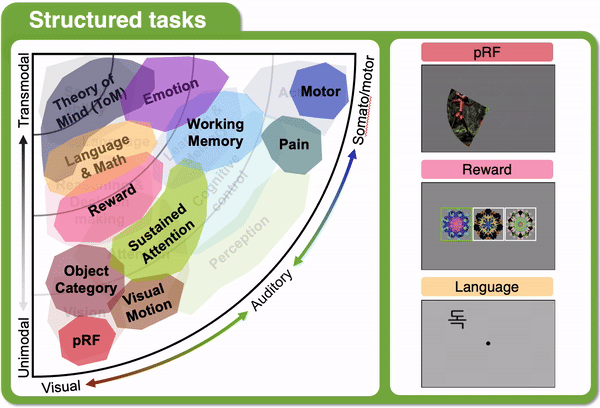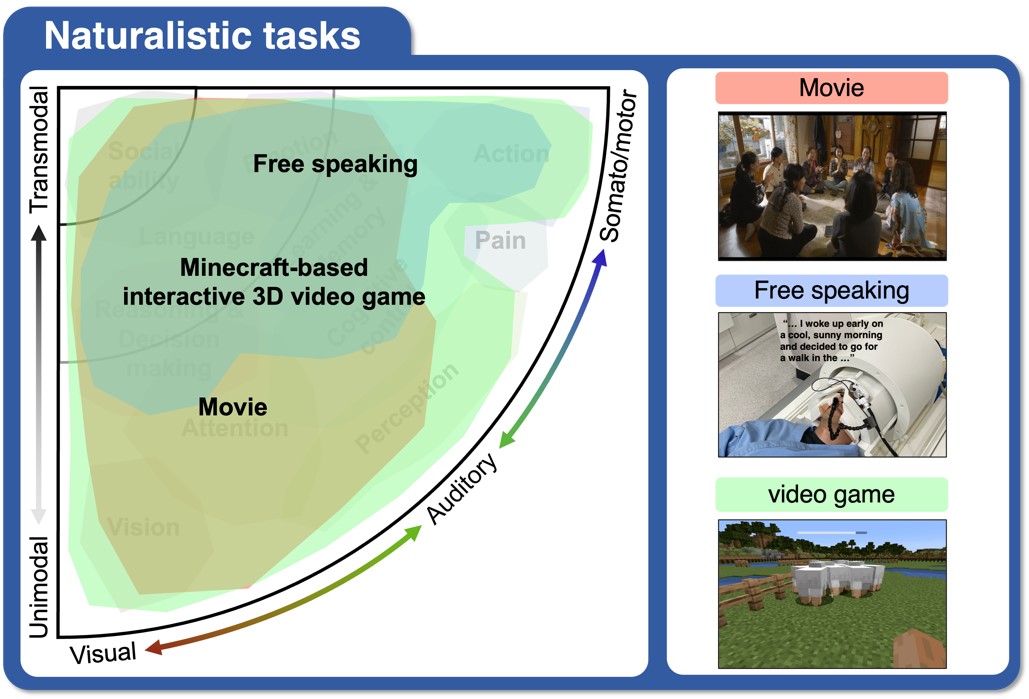Research
7T Human Connectome Project
Large-scale 7T Human Neuroimaging Data: Naturalistic Perception, Action, and Cognition (NatPAC) Dataset
Large-scale human neuroimaging datasets have provided invaluable opportunities to examine brain and cognitive functions at a macroscopic level. Our recent initiative, the 7T NatPAC project, aims to provide high-resolution human brain anatomical and functional datasets (1.5 mm isotropic voxels, TR of 1.6 s) acquired at 7T. This involves dense sampling within individuals, encompassing 12~16 2-hrs sessions per participant, across a broad range of tasks, including both structured and innovative naturalistic tasks. We are also collecting a diverse array of behavioral and physiological data, coupled with high-precision eye-tracking data.
These datasets enable us to investigate a comprehensive spectrum of cognitive and affective processes and to develop advanced data analysis methods and novel computational models.

1. Structured tasks
Through an extensive set of structured tasks, the NatPAC dataset provides comprehensive coverage across a diverse spectrum of sensory (pRF, object category, visual motion, and motor), cognitive (sustained attention, working memory, cognitive control, language & math, theory of mind, and reward-related tasks), and affective processes (emotion and pain) within individual participants.

2. NATURALISTIC TASKS
The human brain has evolved to actively explore the environment, interacting with objects and agents while forming hierarchical plans and decisions to achieve complex behavioral goals. To create datasets that enable us to investigate neural mechanisms underlying perception, action, and cognition as an integrative process that continuously unfolds in naturalistic contexts, our dataset incorporates innovative naturalistic tasks. These tasks encompass watching movies with narrative structures, engaging in free-speaking, and participating in interactive 3D video game playing within a Minecraft environment.
By combining interactive naturalistic paradigms with computational approaches, we aim to investigate how the human brain constructs internal models at multiple levels, spanning from low-level visuospatial coding to high-level contextual beliefs. This will help us understand how the brain supports continuous decision-making and adaptive behaviors within our intricate multidimensional world.

3. COLLABORATORS

Contact Information
- Principal Investigator: Won Mok Shim (심원목), wonmokshim@skku.edu
- Project Manager: Kyeong-Jin Tark (탁경진), 7tcnir@gmail.com

